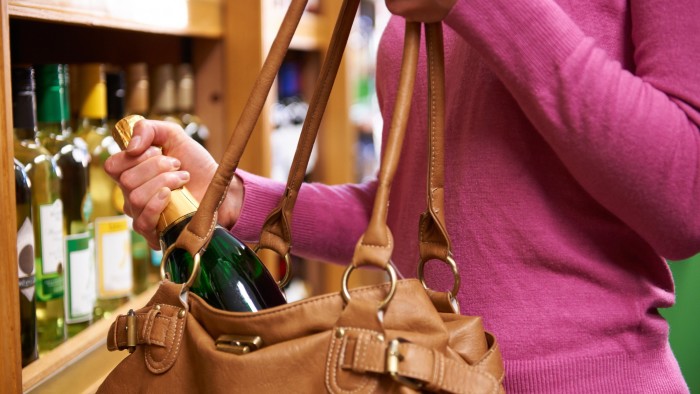Stay informed with free updates
Simply sign up to the Retail sector myFT Digest — delivered directly to your inbox.
Shoplifting in England and Wales has risen to the highest level in more than two decades, according to official statistics released on Thursday.
The number of offences jumped 20 per cent to 530,643 in the year to the end of March — the highest figure registered by the Office for National Statistics since current police recording practices began in 2003.
Shop theft has been increasing sharply since the Covid-19 pandemic, when rising inflation eroded consumer spending power. Retailers have also been contending with high levels of violence and abuse against staff.
James Lowman, chief executive of the Association of Convenience Stores, which represents corner shops, said the record-breaking shop theft figures “continue to demonstrate the need for retail crime to be taken seriously”.
He added that although there was “still a huge gap between the recorded figures and the reality of the number of thefts taking place”, more crimes were being reported.
Theft from shops reached £2.2bn last year in the UK, up from £1.8bn the previous year according to industry data.
Tom Ironside, director of business and regulation at the British Retail Consortium, said the figures “prove what retailers have long been telling us — that retail theft is spiralling out of control”.
“Theft is not a victimless crime,” he added. “It pushes up the cost for honest shoppers and damages the customer experience for everyone.”
The Labour government has put forward a bill that will scrap a rule deeming the theft of goods worth less than £200 merely a “summary offence” with limited sentencing powers.
Retailers had complained that the rule, as well as a lack of enforcement from thinly resourced police units, had contributed to low-level theft.
Large chains such as the Co-op, John Lewis and Primark have all highlighted the financial impact from shoplifting on their operations, typically running into millions of pounds.
Companies have repeatedly said that organised gangs are playing a more prominent role in retail crime, with increasingly aggressive thieves targeting stores systematically.
A significant proportion of shoplifting involves valuable items such as electronics, designer clothes, alcohol and cosmetics, and it is often linked to criminal groups.
Smaller-scale thefts, especially of groceries, baby formula and hygiene products, are also prevalent, partly owing to the cost of living crisis, but also to help fund addiction.





1 Comment
4uumlk